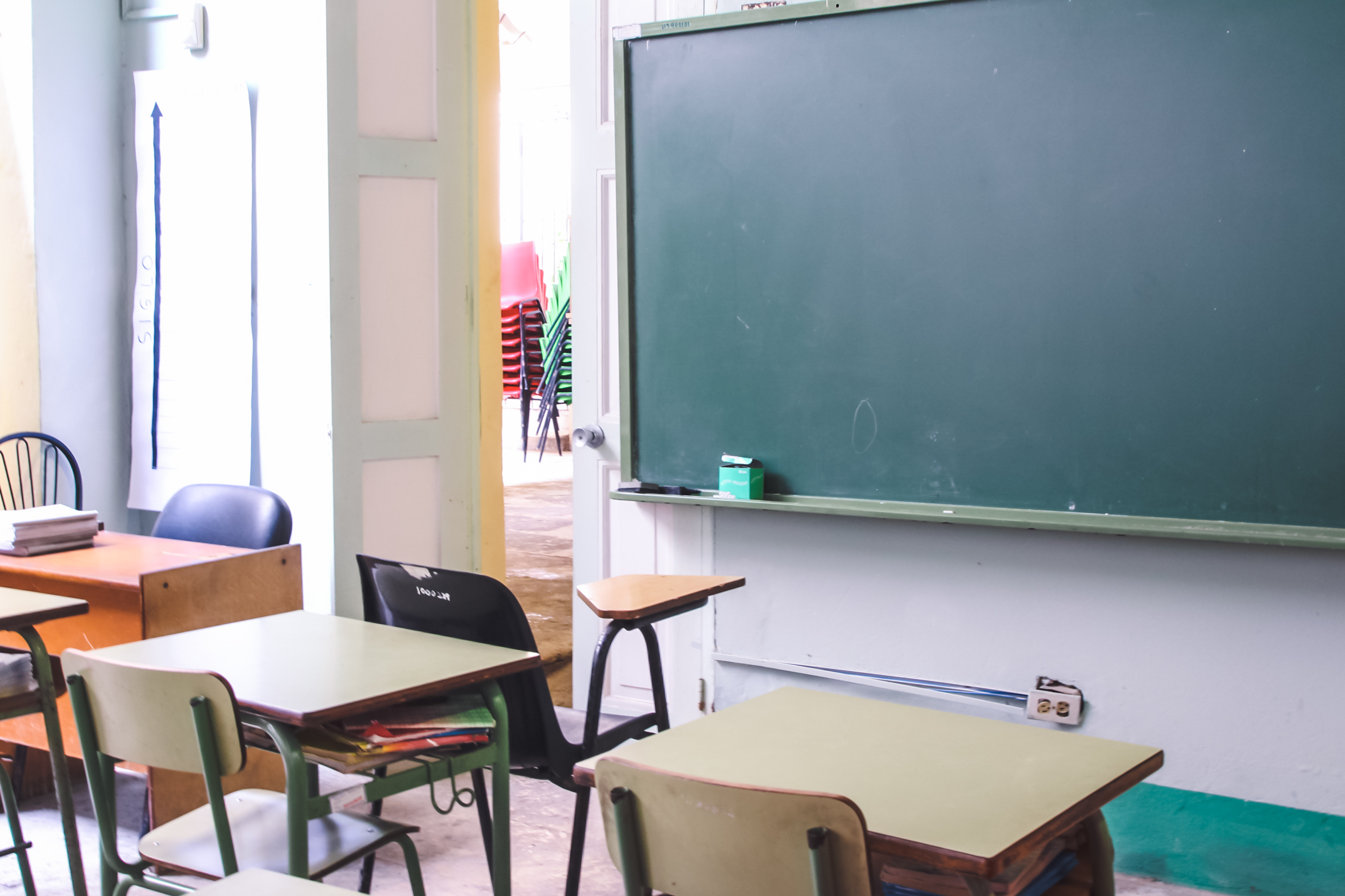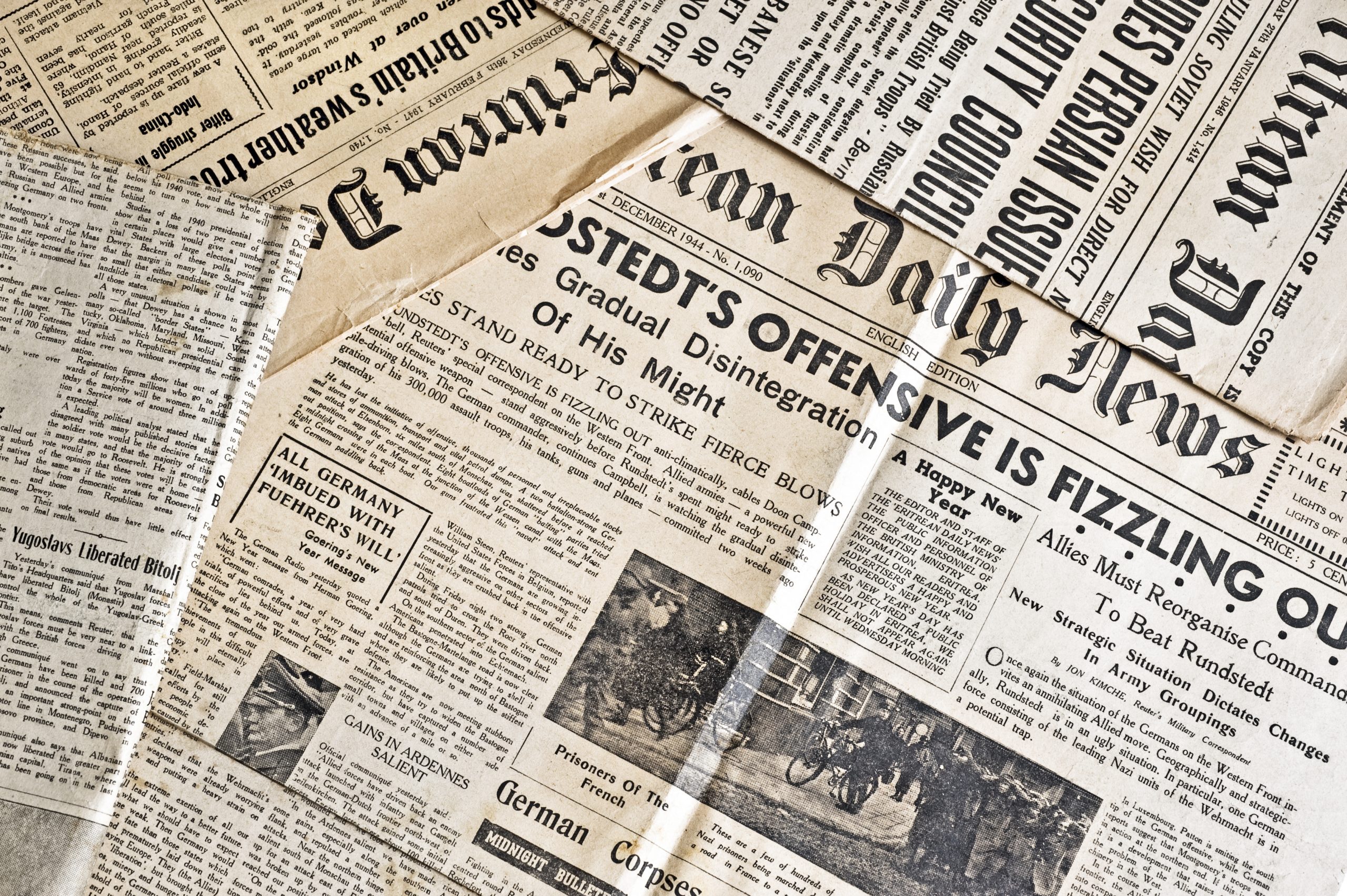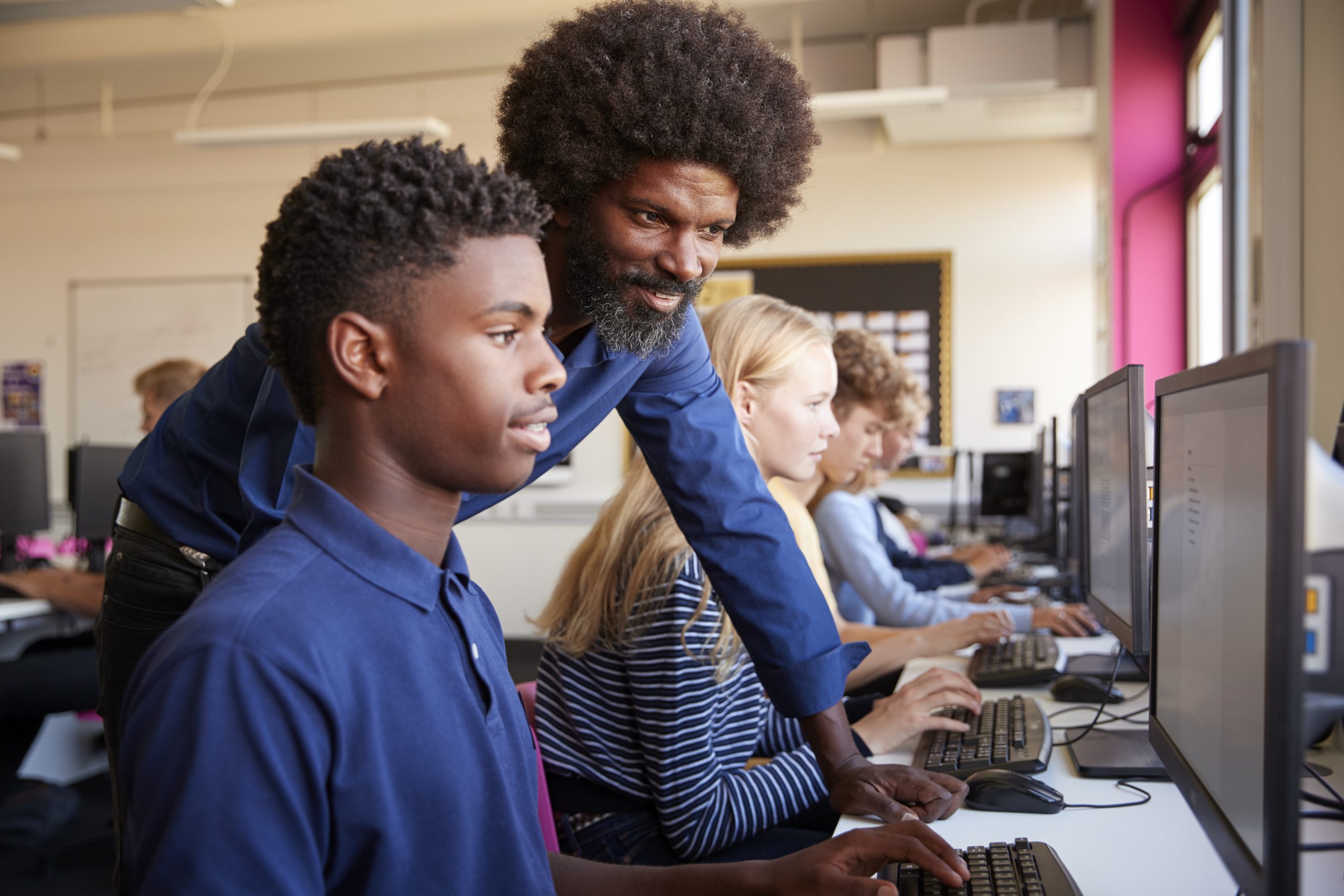20 years ago, a study performed by Grant, Gradwell and Cimbricz revealed that high school students who used primary sources to study historical events developed better interpretive skills and became more interested and engaged in the subject matter compared to traditional textbooks. The students also demonstrated a deeper understanding of historical events and could connect historical events to contemporary issues better. The research in 2004 brings valuable insights into the field of history education. Their study focused on high school students, emphasizing the effectiveness of using primary sources to study historical events.
The study involved students instructed to use primary sources – such as documents, letters, photographs, and other firsthand accounts – as a key part of their study materials rather than relying solely on traditional textbooks. The results revealed notable differences in their learning outcomes compared to their peers studying history through standard textbooks.
In terms of interpretive skills, students using primary sources showed a significant enhancement. These students learned to analyze the sources, question their authenticity, understand their context, and evaluate the biases they may contain. This interactive, investigative approach to learning history is inherently more engaging than passively consuming information from textbooks. As a result, students developed a nuanced understanding of the past, improving their ability to interpret and analyze information in a critical manner.
Engagement and interest in the subject matter were also positively affected. Students became more fascinated by history when they were given the opportunity to explore primary sources. This learning mode made the historical events more real and tangible, which sparked curiosity and sustained interest. This contrasted with the relatively passive absorption of facts from textbooks, which often does not inspire the same level of interest or enthusiasm.
Perhaps one of the most significant findings from Grant, Gradwell, and Cimbricz’s study was the students’ ability to connect historical events to contemporary issues. Students who engaged with primary sources developed a greater understanding of historical events in their complexity and were more adept at drawing connections between those events and the contemporary world. This ability is crucial, as it allows students to understand the present in the context of the past, encouraging a more profound grasp of current issues and events.
Since then, a growing body of research indicates that the use of primary sources in high school history education is a powerful teaching tool.
One notable study conducted by Monte-Sano and Reisman in 2015 provides a different but complementary angle to the research carried out by Grant, Gradwell, and Cimbricz in 2004. Both studies agree on the fundamental benefit of using primary source documents in history education, but each highlights different facets of the learning process that these sources can enrich.
Monte-Sano and Reisman’s research focused on high school history classrooms and the impact of primary sources on students’ historical thinking skills and argumentative writing abilities. These critical competencies are important not only for a comprehensive understanding of history but also for overall academic achievement and future careers. In their study, students were encouraged to interact with primary sources and exhibited considerable improvement in their ability to think historically. These sources provide a firsthand account of historical events, which allows students to analyze and interpret the information in context. This promotes a deeper understanding of the nuances and complexities of historical events, thus improving historical thinking skills.
The study revealed that using primary sources had an unexpected yet positive impact on students’ argumentative writing abilities. As these sources often present differing perspectives on the same events, students needed to analyze, compare, and evaluate the information they contained. This process stimulated critical thinking and enabled students to construct well-informed, balanced arguments in their writing.
The research conducted by Joshua Brown, Rina DePalma, and Santos Alva in 2019 provides a unique perspective that enriches our understanding of the studies conducted by Grant, Gradwell, and Cimbricz and the research of Monte-Sano and Reisman. Each of these studies focuses on a distinct but interrelated element of history education that is greatly enhanced through the use of primary sources. Brown, DePalma, and Alva’s study centers on the cultivation of “historical empathy” among high school students, a notion they borrowed from Keith Barton’s 2005 research. This form of empathy involves the ability to understand, respect, and appreciate the choices, emotions, and experiences of individuals from different historical epochs, taking into account their unique historical contexts. Their research indicated that the introduction of primary sources into classrooms had a profound influence on fostering this form of historical empathy. When students interacted directly with authentic documents from the past, they were able to perceive history through the lens of those who lived it, thereby obtaining a more personal, empathetic understanding.
The 2019 study involved introducing primary sources into high school history classrooms and observing the impacts on students’ understanding and engagement. The use of primary sources provided students with an authentic insight into the past, allowing them to perceive history through the eyes of those who lived it. These sources ranged from newspaper articles and personal letters to diaries and photographs, each offering a first-hand account of the past.
The study’s findings were quite revealing. When engaging with these primary sources, students displayed a significant enhancement in their historical empathy. Rather than seeing history as a collection of abstract dates and events, they began to understand it as a series of human experiences shaped by specific circumstances. Students could understand why individuals or societies made certain decisions at a particular point in history, given the context and pressures of their time.
This empathetic engagement with history led to a deeper understanding of the subject. Students were not merely memorizing facts but were actively interpreting and making sense of historical events and experiences. This translated into increased student interest and involvement in their history classes. The research strongly suggests that primary sources can bring history to life, turning the subject into a fascinating exploration of human experiences rather than a mere catalog of events.
The study provides a solid basis for the argument that integrating primary sources in high school history classes can profoundly enhance the educational experience. The evidence indicates that such a practice promotes a more comprehensive understanding of history, fostering skills such as critical thinking, analysis, and empathy – all critical capabilities for students preparing for college and the world beyond.
As mentioned in my previous post, the 2020 study conducted by Amanda Callison and George Lamb greatly enhances our understanding of the role primary sources play in education, specifically in a digitized format, and complements and builds upon the aforementioned research.
In their study, Callison and Lamb examined the potential benefits of incorporating digital primary sources in middle and high school classrooms. Their findings indicate that these digital resources serve as significant catalysts for promoting active learning and critical thinking skills. In contrast to traditional teaching methods where students passively receive information, the use of digital primary sources fosters an active learning environment. Here, students take a proactive role in their education by delving into digitized newspapers, scrutinizing historical photographs, deciphering first-hand accounts, and piecing together a narrative from these elements. This immersive, hands-on approach helps deepen students’ comprehension of historical events and sharpens their critical thinking abilities as they learn to discern fact from opinion and appreciate the context in which these sources were created.
Additionally, the study by Callison and Lamb indicates that such digitized resources bolster students’ digital literacy skills, a vital competency in our modern digital age. As they navigate these digital archives, students not only learn about historical events but also acquire essential digital skills. They learn to conduct online research effectively, distinguish reliable from unreliable digital sources, and utilize digital tools for academic purposes. This experience provides them with practical education in digital literacy, equipping them with skills that are becoming increasingly indispensable in today’s digitally-driven world.
Moreover, the feedback from the students suggested that they particularly enjoyed the detective-like nature of working with digital primary sources. This active and investigative approach to learning made history more interesting and personally meaningful, transforming it from a static subject into an engaging puzzle that invites exploration.
In essence, Callison and Lamb’s research extends and enriches the findings of the previous studies by highlighting the significant role of digitized primary sources in history education. When considered alongside the findings of Brown, DePalma, Alva, Grant, Gradwell, Cimbricz, Monte-Sano, and Reisman (say that 5 times fast), we can see a more comprehensive picture of the multidimensional benefits of primary sources. These benefits span from enhancing interpretative and argumentative skills, and fostering historical empathy, to promoting active learning and digital literacy, underscoring the indispensable value of primary sources in history education.
Collectively, these studies show that the digitization of primary sources, like historical newspapers, can greatly enhance history education in high school. They make history more engaging and interactive and foster a wide range of skills, from critical thinking and historical understanding to advanced and digital literacy skills.
They also underscore the benefits of using digitized primary sources, such as those available in the Community History Archives of libraries across the United States, in high school history education. They demonstrate that these resources make the learning experience more engaging and meaningful for students and help develop essential skills that will be valuable in their future academic pursuits and beyond. High school students can delve deeper into historical analysis, identifying propaganda, analyzing the impact of events on different societal groups, or researching a historical period or event in-depth. Some rough concepts for lesson plans you could develop for your high school classroom might include:
- From Local to Global: High school students can research how a local event from their community was reported nationally or internationally, or vice versa. Encourage them to examine how perspectives and interpretations change based on location and context and how the audience, be it local or national, influences the way in which it is reported in both cases. This will also allow them to understand the interplay of local, national, and international events. Ask them to present their findings in a multimedia presentation, an essay, or a discussion, helping them to synthesize and communicate their research.
- Exploring Personal Stories: Students can be encouraged to choose an event or time period they’re studying, then locate biographical articles or obituaries in newspapers from that era to piece together the life stories of individuals who lived through it. They can present their findings in a variety of formats such as essays, presentations, or even as mock interviews with their chosen historical figure. In doing so, students will develop a more personal and empathetic understanding of the past, experiencing history through the eyes of those who lived it. This also presents an opportunity to discuss different societal norms and expectations across eras, particularly when examining the lives of diverse and underrepresented individuals.
- Journalistic Styles through Time: Assign students a task to select articles on the same subject (like a presidential election or a major societal event) from different time periods. This could range from the early 20th century to the present day. Students will analyze how the writing style, language, tone, and structure have changed. They should note any shifts in journalistic values, practices and the influence of social and technological developments on journalism. This can lead to broader discussions on the changing nature of media and the interplay between society and the press.
- War Correspondence: Provide students with a list of major wars or conflicts, and assign them to research war reports and letters from soldiers published in newspapers during those times. They should focus on understanding the personal experiences of soldiers, the realities of war, and the societal impacts of the conflict. Students can then present their findings in a class discussion or create a ‘letter home’ from the perspective of a soldier, drawing from the language and sentiment found in their research. This helps bring to life the human impact of wars, making them more than just dates and strategies.
- Historical Op-Eds: Guide students in selecting and analyzing opinion pieces from a specific historical event or period. They should focus on understanding the author’s perspective, the arguments made, and the prevailing public sentiment and discourse of the time. This exercise allows students to gain a deeper understanding of the context surrounding the event or period, and can lead to engaging class discussions on media bias, influence, the role of public opinion, and the interaction between media and politics.
- Cartoon Commentary: Have students choose a political cartoon from a specific era and analyze it for its social and political commentary. They should understand the event or issue the cartoon refers to, identify the message the cartoonist is trying to convey, and discuss the effectiveness of the cartoon as a form of commentary. In doing so, students will not only develop a better understanding of the political and societal issues of the era, but also build their visual literacy skills. This can lead to further discussions on the role and power of satire and caricature in shaping public opinion.
- The Past In Perspective: This lesson plan idea involves students in tracking a specific issue over time by examining articles from different periods. This activity could revolve around a significant event like the civil rights movement or a persistent topic like immigration. Have them locate and provide articles and supporting documents from each decade, comparing and contrasting each example to the previous one, concluding with the current year. Ask them to postulate how this will continue to evolve based on the trends and timelines of the past. Students can chart how perspectives and representations of the issue evolved over time, facilitating their understanding of change and continuity in history. This exercise also promotes critical thinking as they evaluate different viewpoints and synthesize them into a coherent narrative.
Advantage Archives has had the privilege of partnering with hundreds of libraries across the country to provide free and open access to their local history so that the community can explore their community’s past from anywhere, at any time, on any device. Educators can leverage this free resource by integrating historical newspaper research into the classroom. There is no subscription or licensing fee, so any educator can help to bring history alive and make it more relatable to students. It enables students to become active participants in learning history, promoting critical thinking, analytical skills, and a deeper understanding of the past. As educators and library directors, embracing this approach will enrich your history curriculum and foster a more engaged, informed, and enlightened student.
In the next and final installment of this series, we will delve into the practicality and benefits of incorporating digitized historical newspapers and primary sources into your formal lesson plans. We will look at how these authentic documents from the past can play a role in creating dynamic, engaging, and impactful lessons that give students an intimate connection with history, allowing students to witness history through the lens of those who experienced it, thereby deepening their understanding of the complex and intertwined narratives of the past.
Resources:
- Monte-Sano, C., & Reisman, A. (2015). Studying historical understanding in the classroom: Examining the production of historical arguments and explanations. In W. Parker (Ed.), Social studies today: Research and practice (pp. 110-116). Routledge.
- Grant, S. G., Gradwell, J. M., & Cimbricz, S. K. (2004). A question of authenticity: The document-based question as an assessment of students’ knowledge of history. The Journal of Social Studies Research, 28(2), 7-15.
- Brown, S., DePalma, E., & Alva, S. (2019). Constructing Historical Empathy through Virtual Reality: Walking in the Footsteps of Those Who Came Before. Journal of History Teaching, 10(2), 202-222.
- Callison, D., & Lamb, A. (2020). Key Words, Concepts and Methods for Information Age Instruction: Methods for Teaching Information Inquiry. LMC, 38(5), 18-26.




